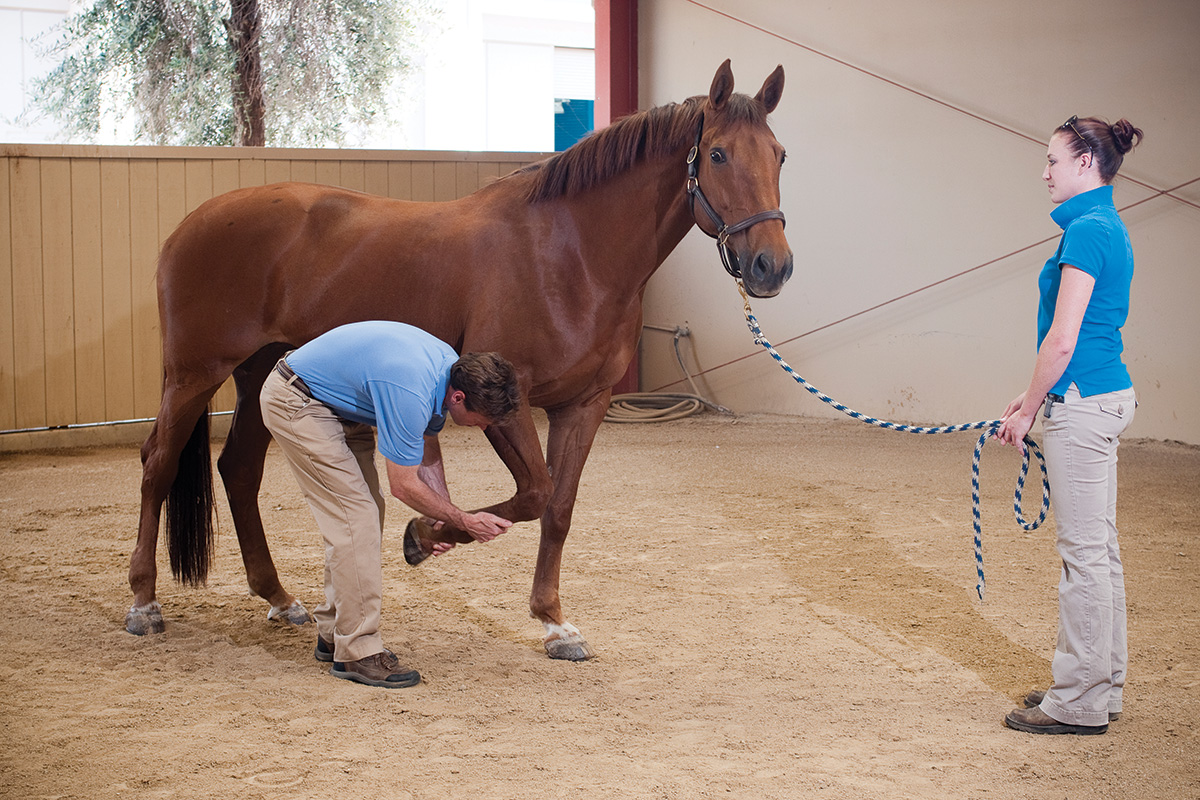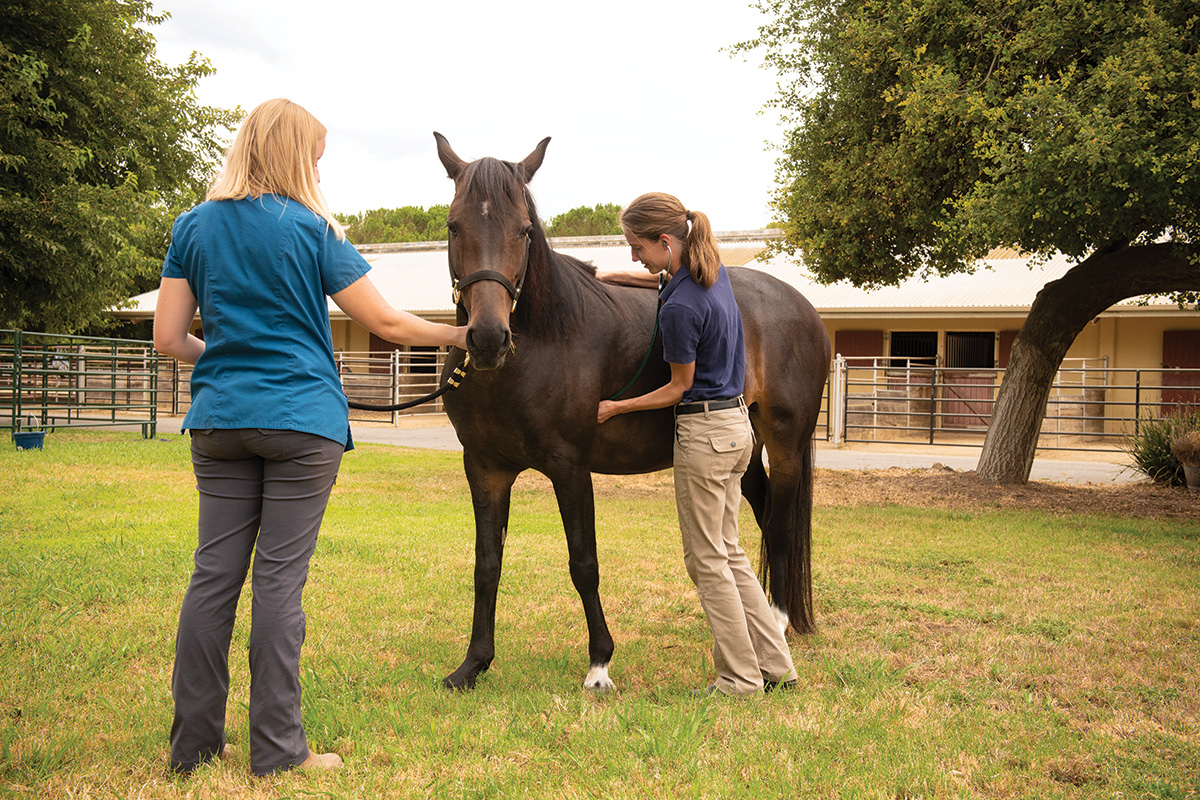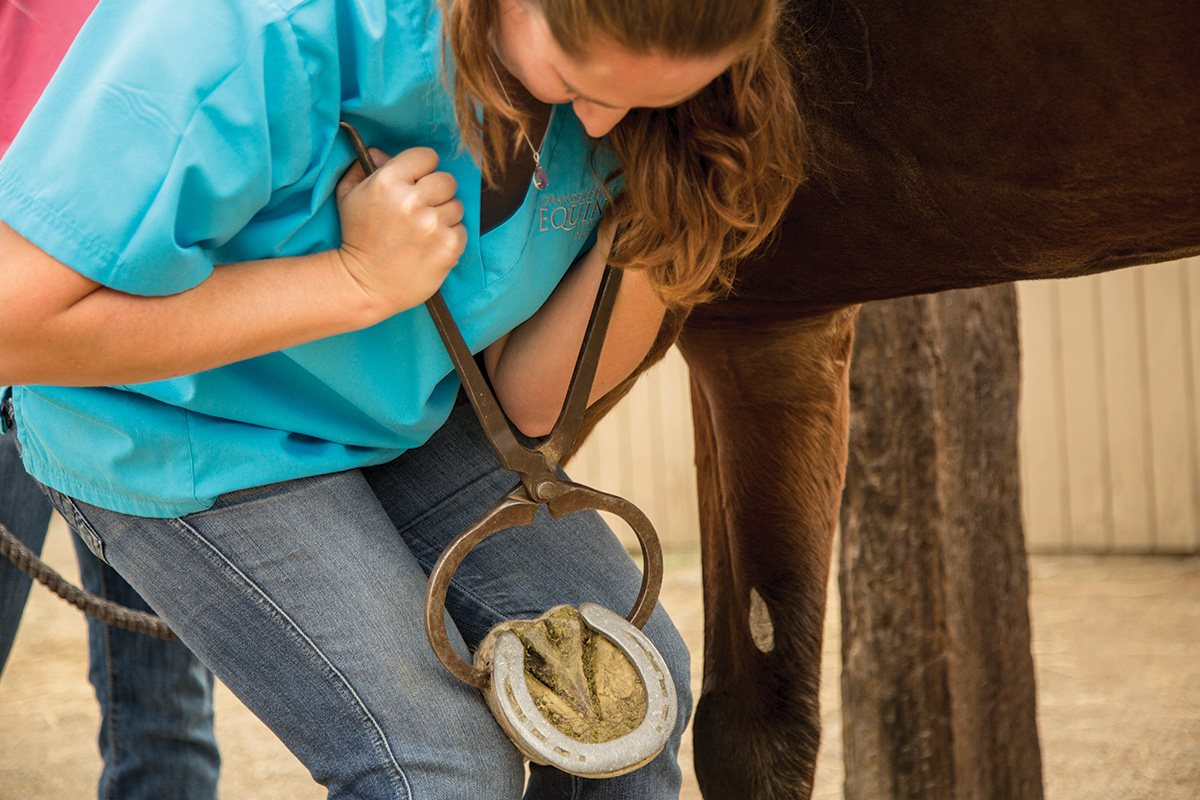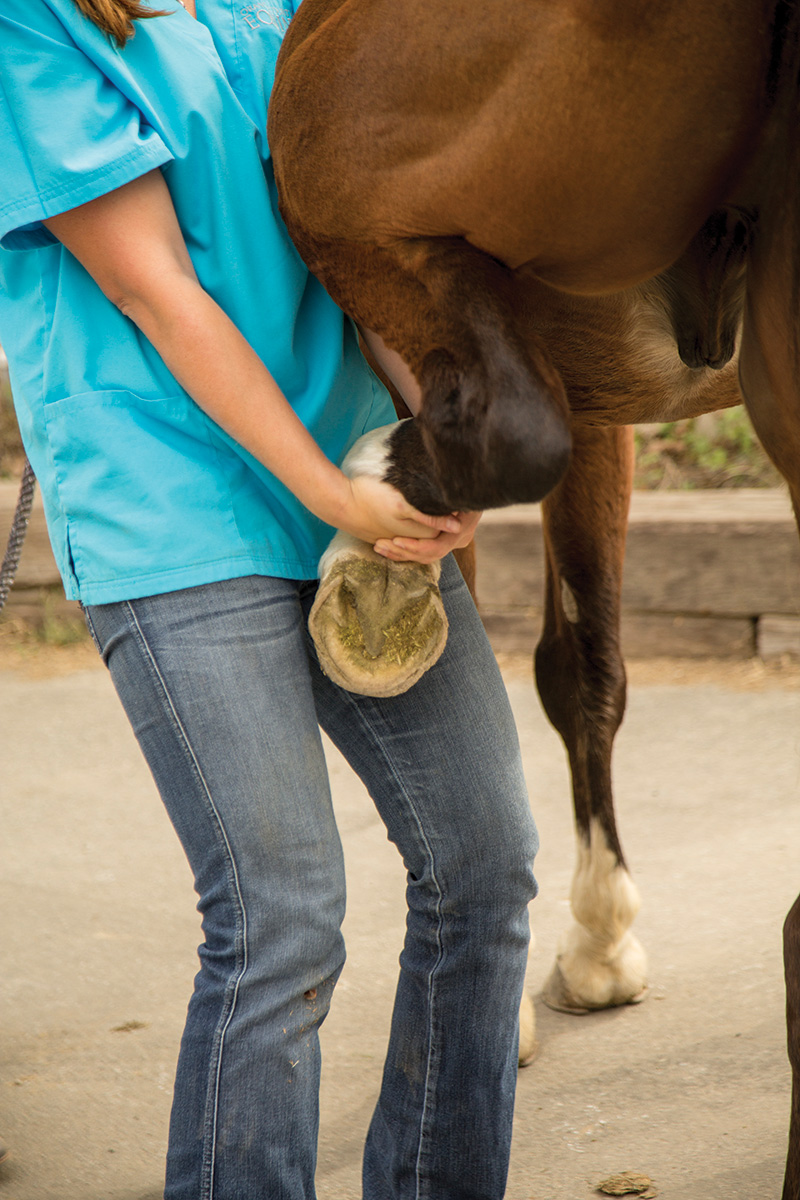
Vetting a horse in a pre-purchase exam (PPE) isn’t like looking into a crystal ball. A PPE can’t predict a life-threatening or career-ending injury or a catastrophic diagnosis. Nor is the exam meant to foretell a horse’s future health or anticipate maladies that he may incur, but like a house inspection, the purpose is to provide some reassurance for you as the potential buyer.
Questions to Ask When Buying a Horse
Begin with the following questions: What’s your skill level as a rider? What is the horse’s potential job—reiner, jumper, trail horse? Does your trainer have a role in whether or not you purchase the horse? What is your financial situation? Can you afford long-term maintenance costs for a pre-existing condition?
According to Luke Bass, DVM, faculty member in the Equine Field Services Department of Colorado State University, the PPE reviews a horse’s medical history and an evaluates his current physical condition.
“We want to know the entire history of the horse, but it’s important to get your hands on the horse with a physical examination,” says Bass. “We’re not there to persuade the buyer one way or the other. We’re presenting facts. Some facts scare people, but it depends on what they’re willing to manage. For example, if a buyer is only going to ride a horse a couple of times a month, that’s different from showing a horse once a week on a national circuit. The pre-purchase exam isn’t an insurance policy, either. The exam is more like a house or vehicle inspection, allowing the buyer to have some confidence that they’re making the right decision when buying a horse.”
You’ll benefit from evaluating a horse for your current needs and future goals as your skills and goals advance and the partnership develops. You’ll want to assess the level of risk you’re willing to take and factor in potential health expenses and management requirements in your decision to buy or pass on a horse.
“Many people don’t exactly know what to look for when they’re buying a horse,” says Bass. “For example, parents will bring their 12-year-old daughter to ride the horse. They get along, but maybe the parents aren’t so savvy on medical conditions that may impact that relationship in the future. We want to ensure that we’re helping them make the right decision for their kid or themselves.”
The Changing of Pre-Purchase Exams
Older horse owners remember the simpler days of a PPE. The results were equally fundamental: Is the horse sound? Does he need his teeth floated? Is he generally healthy?
The content, complexity, and cost of a PPE has ballooned over the past 10 years, according to Diana DeBlanc, DVM, owner of Performance Equine Veterinary Services in Albuquerque, N.M.
“When I started practicing 25 years ago, a pre-purchase exam was pass/fail,” she says.
“I think the mindset has changed. If you’re a practitioner in the performance world, you have to be realistic and realize that you can find something wrong with every horse. Having ridden performance horses myself, I’ve always done my pre-purchases knowing that we may find an issue, but is this an issue that the owner wants to take on if it’s manageable? For example, a horse may exhibit [arthritic] changes in his hocks, but we may expect it with his job, and we can maintain it.”
The ballooning complexity and cost of a PPE over the past 10 years can influence the exam’s content, according to DeBlanc. For you as a buyer, determining whether a horse is healthy and sound may differ from someone who wants to dig deeper with advanced imaging.

As potential buyers become more educated and aware, PPEs evolve.
“Some people want me to listen to a horse’s heart and lungs, flex the legs, and make sure the animal is healthy,” says DeBlanc. “Other buyers want every bit of data and diagnostics available, including a menu of joint X-rays, an endoscope, and more.”
The ladder of a PPE’s content swells with each component, as does the cost. A PPE for the average horse owner ranges from $250 to $500. Four radiographs add around $200. A drug screen will set a buyer back $300 to $500.
Establishing a budget and understanding how costs can climb provide a guideline for your pocketbook prior to an exam.

A Menu of Options
Possible neurologic disorders, a higher risk of breed-specific genetic problems that have yet to surface, dental imperfections that affect a horse’s ability to perform, or conditions only confirmed by a blood test have changed how a PPE is executed.
The menu of options available could include such diagnostics as digital radiographs to detect bone splints or damage to the navicular bone, or ultrasounds to highlight soft tissue injuries in tendons and ligaments. An endoscopy examines the upper breathing airway, while a gastroscopy may be recommended for a horse with a history of gastric ulcers.

Drug screens are standard with PPEs for upper-level and financially valuable horses. These detect the presence of sedatives, steroids, anti-inflammatories, or pain killers used to mask pain or unsoundness, or to unnaturally enhance a horse’s speed or power.
However, customizing a PPE with advanced diagnostic tests can send the budget spiraling and may not be necessary. For example, an upper-airway endoscopy may be warranted if a horse exhibits coughing or stress during exercise, but it may not be needed if his breathing is normal.
Bass stresses three key areas where PPEs have changed the most: imaging techniques, communication skills, and buyer education.
“You probably still have to X-ray the legs, and maybe even ultrasound soft tissues, but the things that have changed the most are probably the evaluation of the axial skeleton and the impact that can have on the performance of the horse,” says Bass.
Open and honest communication channels between the buyer, seller and veterinarian pave the way for a thorough and accurate PPE. Communication skills for vets have evolved, too, according to Bass.
“I’m asking questions that allow me to learn more about the horse efficiently,” he says. “Veterinarians should ask a lot of open-ended questions and gather perspective from all parties. That’s our job.”
The Weight of Buying a Horse
The decision to buy a horse or pass on it is yours alone. Unsolicited but well-intended advice should never replace a thorough presentation of facts, scientific opinion, and approaches for maintenance and care required in light of an exam’s findings.
Every horse purchase is weighty and requires fairness, according to Bass.
“I try to treat every horse the same, whether it’s a backyard horse selling for $2,000 or a $1.5 million racing stallion. I want the buyer to have confidence that we are doing the pre-purchase exam the same way for every horse.”
This article about pre-purchase exams when buying a horse appeared in the September 2022 issue of Horse Illustrated magazine. Click here to subscribe!





